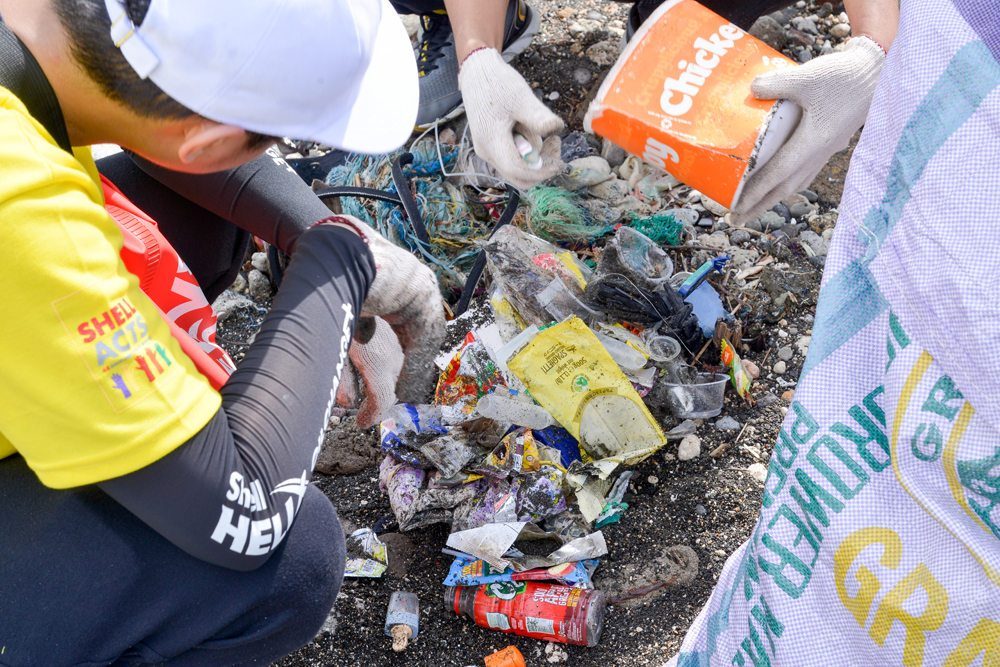FROM the tiniest plankton to the largest whales, plastics impact nearly 700 species in our ocean
You’ve probably seen videos of these impacts first hand, like a sea turtle with a plastic straw embedded in its nose or a whale entangled in a fishing net, approaching divers that release it from harm. Some of these incidents have happy endings, but in reality, many more do not.
Plastic has been found in more than 60% of all seabirds and in 100% of sea turtles species, that mistake plastic for food. And when animals ingest plastic, it can cause life-threatening problems, including reduced fitness, nutrient uptake and feeding efficiency—all vital for survival.
“The tide of plastics entering the ocean can, indeed, be reversed.” – Nicholas Mallos, Director, Trash Free Seas®, Ocean Conservancy
Every year, 8 million metric tons of plastics enter our ocean on top of the estimated 150 million metric tons that currently circulate our marine environments. Whether by errant plastic bags or plastic straws winding their way into gutters or large amounts of mismanaged plastic waste streaming from rapidly growing economies, that’s like dumping one New York City garbage truck full of plastic into the ocean every minute of every day for an entire year! And that much plastic is bound to have an impact on ocean ecosystems.
Plastic Ocean. In fact, plastic production and consumption are predicted to double over the next 10 years.
That means that if we don’t do something now, we could be facing 250 million metric tons in the ocean in less than 10 years. We can’t stand by and watch the impacts of this tidal wave of plastic heading our way—neither failure nor inaction is an option.
A Solution as Wide as the Ocean Itself. Plastic in the ocean is a people problem, which means people like you can help solve it.
For more than 30 years, Ocean Conservancy has brought together more than 12 million volunteers from 153 countries to participate in our annual Inter-national Coastal Cleanup. In that time, volunteers have picked up more than 220 million pounds of trash from the world’s beaches. We’re so proud of the work this global family of volunteers has achieved together, but with plastic production increasing around the world, it’s clear that the ultimate solution is to keep plastic out of the ocean in the first place.
Our goal is to cut down the amount of plastic entering the ocean by half within a decade.
We believe that the long term solution to plastic in our ocean is to transform the role that plastic plays in the worldwide economy. But with 8 million metric tons dumped in the ocean every year, the ocean can’t wait for long term solutions, and we need to act now. Plastic production is expected to double over the next ten years, and we need to make sure the accompanying wave of plastic waste never reaches our ocean.
“The clock is ticking; we must confront this challenge before plastics overwhelm the ocean.” – George Leonard, Chief Scientist, Ocean Conservancy
By supporting the development of fundamental waste collection and management in countries with rapidly growing economies and increasing use of disposable plastic, we can prevent the growing tide of plastic from entering the ocean now. Waste management not only provides a critical mid-term solution to the problem, but it is also the core foundation on which the longer term solution of a circular economy is built.
Ripple Effects | You Can Be Part of the Solution. Did you know that implementing waste collection and recycling globally can not only address the issue of ocean plastic pollution, but can improve public health by preventing the spread of infectious disease, reducing respiratory illnesses from open air burning of waste, and prevent food chain contamination of both livestock and fish and shellfish?
Getting waste management right improves more than ocean health. It can increase economic and job growth, make us healthier and reduce emissions of greenhouse gasses.
If you’re like us, you don’t want to see an ocean swimming with plastics. That’s why we’re committed to bringing together the private sector, NGO organizations, government, stake-holders and countless partners dedicated to stop plastic at the source, before it reaches our ocean.
Today, you can be the hero in our story of plastics and the ocean.
It’s thanks to supporters like you that we’re able to tackle this problem from the local to the international level, working to stop plastics from reaching our ocean at all points along the pollution pipeline. This is a complex issue and it will take all of us—from corporate responsibility to government engagement and public involvement—to craft lasting solutions.|-BNN

















